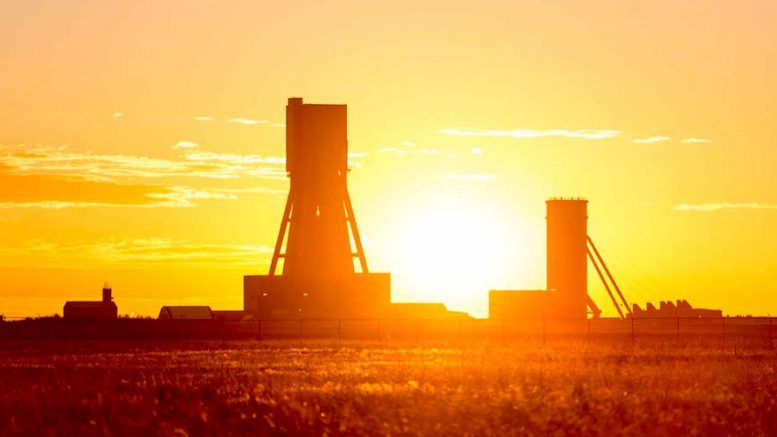In our July 5-18 issue we bring you our popular rankings by market capitalization of the top ten Canadian-headquartered companies across five sectors. The lists are always a compelling read and are compiled by our colleagues at MiningIntelligence, which like The Northern Miner, is part of the Glacier Resource Innovation Group.
If I had to pick one company — and sector — that stands out in this year’s lists, it would be Nutrien (TSX: NTR; NYSE: NTR) and the potash sector. Nutrien retained its second-place ranking again this year on the list of top ten Canadian mining companies, and saw its US dollar market cap surge from US$19.8 billion when the lists were compiled last year to US$35.8 billion this year. Its shares on the New York Stock Exchange are now trading at about US$61, more than double their 52-week low of US$30.56 per share.
The company, formed from a merger of Potash Corp. of Saskatchewan and Agrium in 2018, says it produces about 27 million tonnes of potash, nitrogen and phosphate products a year, and on June 21 increased its 2021 guidance for potash production to between 13.3 million tonnes and 13.8 million tonnes.
In mid-May, Nutrien declared a quarterly dividend of US46¢ per share, soon after reporting strong first-quarter results. The company generated $476 million in free cash flow in the first quarter, more than double that of the first quarter of 2020, while adjusted EBITDA jumped by nearly 60% year-on-year to $806 million.
Nutrien’s potash adjusted EBITDA rose by 33% in the first quarter compared to the same quarter a year ago, “due to higher net realized selling prices and sales volumes,” the company said, adding that its potash sales volumes “were near record levels for a first quarter due to continued strong demand in North American and offshore markets.”
Looking ahead to the remainder of the year, the company raised its full-year adjusted EBITDA guidance to between $4.4 billion and $4.9 billion, up from $4.0 to $4.5 billion, and its adjusted net earnings per share to $2.55 to $3.25 per share, up from $2.05 to $2.75 per share.
“Crop prices are at multi-year highs supported by strong global demand and less than expected supply from major production regions,” Nutrien elaborated in a press release. “The rally in crop prices highlights the tightness in global supply and demand balances and the sensitivity to any potential supply risk in 2021.”
Sticking with potash, Cecilia Jamasmie reports on page seven of the issue that BHP is getting closer to making a final decision on whether to go ahead with its Jansen potash project in Canada, more than a decade after completing a feasibility study on the proposed mine and after spending about US$4.5 billion laying the groundwork. It will likely cost another US$5.7 billion to build.
During a briefing in mid-June on the outlook for potash, BHP told analysts and investors that it expects that the potash market will grow at a compound annual growth rate of 1-3% between 2020 and 2030. It also pointed out that potash is “a low emission, biosphere friendly” fertiliser that doesn’t release carbon dioxide (Co2) or nitrous oxide (N2O) and “doesn’t pollute waterways.”
As such, it said, Jansen would produce an “attractive commodity” that “fits” the company’s “strategic framework,” and offers exposure to the global mega trends of decarbonisation and land use. “Potash sits at the intersection of global demographic, social and environmental megatrends,” BHP stated. “The environmental footprint of potash is considerably more attractive than other major chemical fertilizers.”
Major construction permits for Jansen are in place, including the environmental impact study, mining plan, mining closure plan and construction water authorisation, it added, and construction would take about five to six years with about two years from first production to ramp up. Volumes would be between 4.3 and 4.5 million tonnes of potassium chloride, KCl, per year.
“We’ve got a really big decision ahead of us on Jansen,” Rag Udd, president of Minerals Americas at BHP, acknowledged during the briefing on June 17. The executive also noted that the decision “depends on more than the fundamentals for potash,” which he said are “very, very attractive.”


Be the first to comment on "Editorial: Potash sector has ‘attractive fundamentals’"